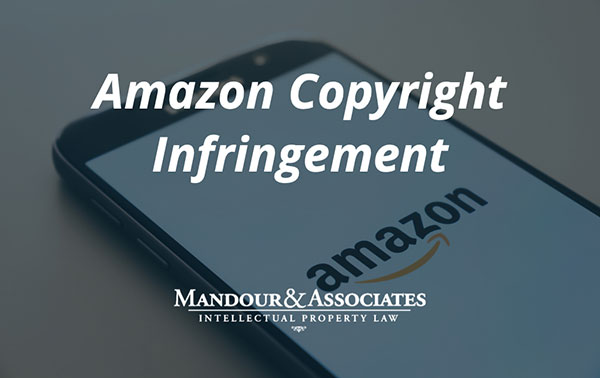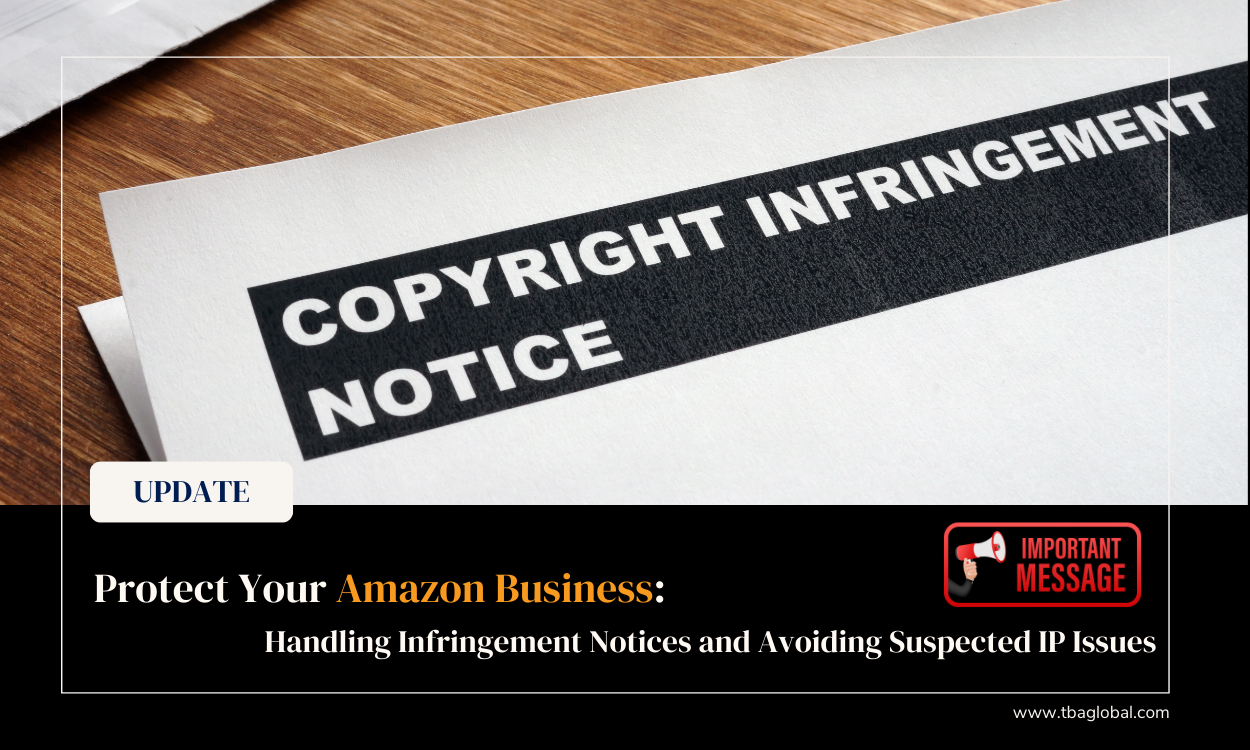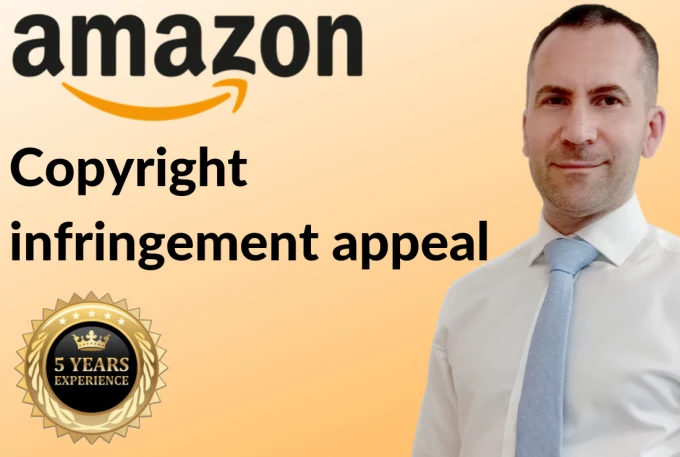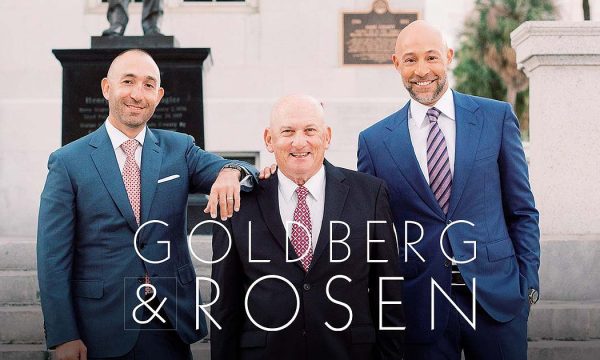In the bustling world of e-commerce, Amazon stands as a giant, offering vast opportunities for sellers. However, with great opportunity comes the responsibility to navigate legal landscapes, especially concerning copyright infringement. Copyright infringement on Amazon is a serious issue that can have significant repercussions for sellers. This article aims to provide Amazon sellers with a comprehensive understanding of what copyright infringement is, common types of violations, steps to avoid it, and Amazon’s procedures for handling these claims.
Toc
- 1. Introduction of Copyright Infringement on Amazon
- 2. Steps Sellers Can Take to Avoid Copyright Infringement
- 3. Amazon’s Policies and Procedures for Handling Copyright Infringement Claims
- 4. Related articles 01:
- 5. Resolving Copyright Infringement Claims on Amazon
- 6. How to Avoid Copyright Infringement on Amazon
- 7. Related articles 02:
- 8. Real-Life Examples and Case Studies
- 9. Conclusion
Introduction of Copyright Infringement on Amazon

Copyright infringement is the act of using someone else’s intellectual property without their permission. On Amazon, this could include using copyrighted images, logos, product descriptions, or even selling counterfeit items. It can result in legal action taken against the seller and removal of their product listings on Amazon.
What is Copyright Infringement on Amazon?
Copyright infringement occurs when a seller uses copyrighted material without permission from the copyright owner. This can include using images, logos, text, or designs that belong to someone else. It’s crucial to differentiate between copyright infringement and unauthorized reselling. The latter involves selling genuine products without the permission of the brand owner but typically does not involve copying or reproducing copyrighted material.
Common Types of Copyright Violations on Amazon
Amazon sellers may inadvertently commit copyright violations in several ways:
- Using Copyrighted Images or Logos: Uploading product images or logos that are copyrighted without obtaining permission.
- Selling Counterfeit Goods: Offering fake products that imitate genuine branded items.
- Listing Copyrighted Books Without Permission: Selling books or digital content without the proper rights or licenses.
- Using Copyrighted Content in Product Descriptions: Including copyrighted text or descriptions without obtaining permission.
Steps Sellers Can Take to Avoid Copyright Infringement

To ensure compliance and avoid copyright infringement, sellers should:
- Research Intellectual Property Laws and Amazon’s Policies: Familiarize themselves with copyright laws and Amazon’s specific guidelines regarding intellectual property.
- Obtain Necessary Permissions or Licenses: Ensure that any copyrighted material used in listings has been legally acquired and permission has been granted.
- Regularly Review Product Listings: Conduct periodic audits of product listings to ensure all content is compliant with copyright laws and Amazon policies.
- Use Original Content and Images: Avoid using copyrighted material and instead create original content for product listings.
- Be Cautious of Suppliers and Manufacturers: Verify that products being sourced are genuine and not counterfeit goods.
Amazon’s Policies and Procedures for Handling Copyright Infringement Claims
Amazon takes copyright infringement seriously and has established procedures for handling these claims.
Amazon’s Policies of Copyright Infringement
Amazon takes copyright infringement seriously and has strict policies in place to protect intellectual property. Some key points include:
1. https://viralblogspost.com/archive/3597/
2. https://viralblogspost.com/archive/3125/
3. https://viralblogspost.com/archive/3621/
- Strict Suspension of Offending Listings: If a seller is found to have committed copyright infringement, their listings will be removed immediately.
- Cooperation with Rights Holders: Amazon works closely with rights holders to address and resolve copyright infringement claims.
- Repeat Offenders May Lose Selling Privileges: Sellers who repeatedly commit copyright violations may face restrictions or even suspension of selling privileges on Amazon.
Procedures for Handling Copyright Infringement Claims
If a seller receives a complaint about potential copyright infringement, they should take immediate action by following these steps:
- Review the Claim Thoroughly: Carefully read through the claim and identify the specific copyrighted material in question.
- Investigate and Gather Evidence: Conduct an internal investigation to determine if there has been any infringement and gather evidence to support your case.
- Remove Offending Material: If it is determined that there has been copyright infringement, immediately remove the offending material from listings.
- Respond to Complaints Promptly: Respond to the complaint promptly and provide a detailed explanation of steps taken to address the issue.
- Appeal if Necessary: If you believe the claim was made in error or have resolved the issue, you can appeal Amazon’s decision by providing additional evidence.
By understanding copyright infringement on Amazon, conducting due diligence, and following proper procedures, sellers can protect themselves from legal repercussions and maintain a good standing on the platform. It’s essential to prioritize compliance and avoid taking shortcuts that could result in severe consequences. With proper measures in place, sellers can continue to thrive on Amazon while respecting intellectual property rights.
Resolving Copyright Infringement Claims on Amazon

The Impact of Copyright Infringement on Sellers’ Accounts and Businesses
Copyright infringement can have severe consequences, including:
- Account Suspension: Amazon may suspend or deactivate seller accounts found guilty of infringement.
- Loss of Revenue: Suspensions and legal battles can lead to significant financial losses.
- Legal Implications: Sellers may face lawsuits and legal action from copyright owners.
- Damage to Reputation: Infringement claims and suspensions can damage a seller’s reputation and credibility.
Steps for Resolving Copyright Infringement Claims
If a seller is accused of copyright infringement, it’s crucial to take immediate action to resolve the issue in a timely and professional manner. The following steps can help sellers effectively navigate this process:
- Respond Promptly and Professionally: Respond to complaints promptly and in a professional manner, providing evidence if possible.
- Remove Offending Material: Immediately remove any copyrighted material that may be infringing upon someone else’s intellectual property rights.
- Review Amazon’s Policies and Procedures: Familiarize yourself with Amazon’s policies and procedures for handling copyright infringement claims to ensure you are following the correct steps.
- Work With Rights Holders: Communicate with rights holders, provide explanations, and work towards an amicable resolution.
- Seek Legal Advice if Necessary: If the situation escalates or becomes complicated, it may be necessary to seek legal advice from a professional familiar with intellectual property laws and Amazon’s policies.
By taking swift and appropriate action, sellers can effectively resolve copyright infringement claims and potentially avoid severe consequences. It’s essential to prioritize compliance, respect intellectual property rights, and maintain open communication throughout the process. In doing so, sellers can continue conducting business on Amazon while avoiding any potential legal issues.
The Importance of Monitoring Your Account
Regularly monitoring your Amazon seller account is crucial for early detection and prevention of copyright infringement:
- Conduct Regular Audits: Periodically review listings and content for compliance.
- Stay Updated: Keep abreast of changes in Amazon’s policies and copyright laws.
- Engage with Customers and Competitors: Monitor feedback and identify any potential infringement claims early.
- Be Vigilant: Be vigilant and proactive in addressing any potential infringement issues before they escalate.
By regularly monitoring their accounts, sellers can identify and address any potential copyright infringement claims promptly, minimizing the risk of facing severe consequences. It’s essential to stay informed, engage with customers and competitors, and conduct regular audits to ensure compliance with Amazon’s policies and copyright laws. By doing so, sellers can protect their businesses and maintain a strong reputation on the platform.
How to Avoid Copyright Infringement on Amazon

As an Amazon seller, it is your responsibility to ensure that you do not commit copyright infringement.
Steps to avoid copyright issues on Amazon
Below are some steps you can take to avoid copyright issues:
- Do Your Research: Before listing any products, research the market and ensure that your product does not infringe on anyone else’s intellectual property rights.
- Use Original Content and Images: Avoid using copyrighted material in your listings, such as images or text from other sellers’ listings or websites.
- Obtain Permission: If you want to use someone else’s content for your listings, obtain their permission first.
- Be Careful with Private Label Products: When sourcing private label products, thoroughly research the manufacturer to ensure they are not violating any copyrights.
- Stay Up-to-Date on Copyright Laws and Amazon Policies: It is crucial to regularly review Amazon’s policies and keep abreast of any changes in copyright laws to ensure compliance.
By taking these preventive measures, sellers can avoid potential infringement claims and maintain a good standing on Amazon. Remember, ignorance is not an excuse for violating intellectual property rights, so it’s essential to prioritize compliance at all times.
1. https://viralblogspost.com/archive/3370/
2. https://viralblogspost.com/archive/3125/
3. https://viralblogspost.com/archive/3333/
Additional Preventive Measures
Beyond the foundational steps, here are further preventive measures that Amazon sellers can adopt to protect against copyright infringement:
- Implement a Trademark Watch Service: Employ a trademark watch service to monitor and alert you of any potential trademark infringements on your listings. This helps to proactively address issues before they escalate.
- Use Automated Monitoring Tools: Leverage automated tools and software to continually scan your Amazon listings for potential copyright violations. These tools can provide real-time alerts, helping you stay compliant.
- Conduct Regular Training: Ensure that your team is well-versed in intellectual property laws and Amazon’s policies. Regular training sessions can help keep everyone updated on best practices and legal requirements.
- Maintain Detailed Records: Keep thorough documentation of all rights ownership and permissions related to your products. This can serve as vital evidence if any infringement claims arise.
- Establish a Compliance Checklist: Create a comprehensive checklist to review before posting any new listing. This should include verifying the authenticity of product designs, ensuring proper licenses for images, and confirming adherence to Amazon’s policies.
- Perform Competitor Analysis: Regularly analyze your competitors’ listings for potential copyright risks. This can help identify gaps in your own compliance and provide strategies to strengthen your intellectual property protections.
- Engage in the Amazon Brand Registry Program: Enrolling in the Amazon Brand Registry program can provide access to advanced tools and support to help protect your brand and intellectual property.
- Collaborate with Legal Professionals: Establish a relationship with intellectual property attorneys who can offer specialized advice and assistance in preventing and addressing infringement issues.
By incorporating these additional measures into your business practices, you can further safeguard your Amazon seller account from potential copyright infringement claims. Staying proactive, informed, and diligent is key to maintaining compliance and protecting your brand’s integrity.
Real-Life Examples and Case Studies

Several high-profile cases of copyright infringement on Amazon have resulted in legal action and significant consequences for sellers.
Case Studies
Understanding real-life scenarios can help sellers better navigate copyright issues on Amazon:
- Small Business with Handmade Jewelry: A small business selling handmade jewelry was accused of copyright infringement by a larger retailer for using a similar design. The case was resolved in the seller’s favor after proving the design was original.
- Independent Book Seller: An independent book seller unknowingly listed a book for sale that was under copyright by another author. The seller’s account was suspended temporarily and had to undergo a reactivation process after removing the listing and providing documentation of rights ownership.
- Private Label Seller with Multiple Infringement Claims: A private label seller faced multiple infringement claims due to using logos and images without proper licensing. This led to account suspension, and the seller had to establish a compliance plan with Amazon to regain selling privileges.
- Clothing Brand Facing Counterfeits: A clothing brand discovered counterfeit versions of their products being sold on Amazon. They initiated the Amazon Brand Registry program and worked with Amazon to remove the counterfeit listings and prevent future infringements.
Expert Opinions
- Amazon Legal Team: “Amazon is committed to protecting intellectual property rights and encourages sellers to familiarize themselves with copyright laws to avoid violations.”
- Intellectual Property Attorney: “Obtaining proper licenses and permissions is crucial for any seller using copyrighted material. Legal counsel can provide valuable guidance in navigating these complex issues.”
- Successful Amazon Seller: “Regularly reviewing listings and staying informed about policy changes has been key to maintaining compliance and avoiding potential infringements.”
By following these guidelines and leveraging available resources, Amazon sellers can successfully navigate the challenges of copyright infringement and build sustainable, reputable businesses.
Conclusion

Navigating the complexities of copyright infringement on Amazon requires diligence and a proactive approach. By understanding what constitutes copyright infringement, taking steps to avoid it, and knowing how to respond to claims, sellers can protect their businesses and maintain their reputation on the platform.
Ethical and legal selling practices not only protect sellers from potential legal issues but also foster trust and credibility with customers. For sellers committed to conducting business responsibly, the journey towards compliance can be a rewarding one.
















Leave a Reply